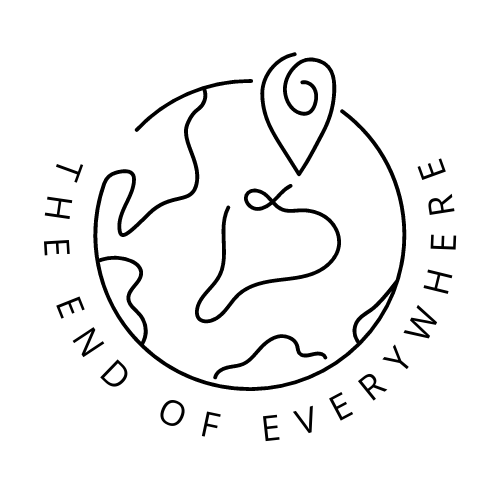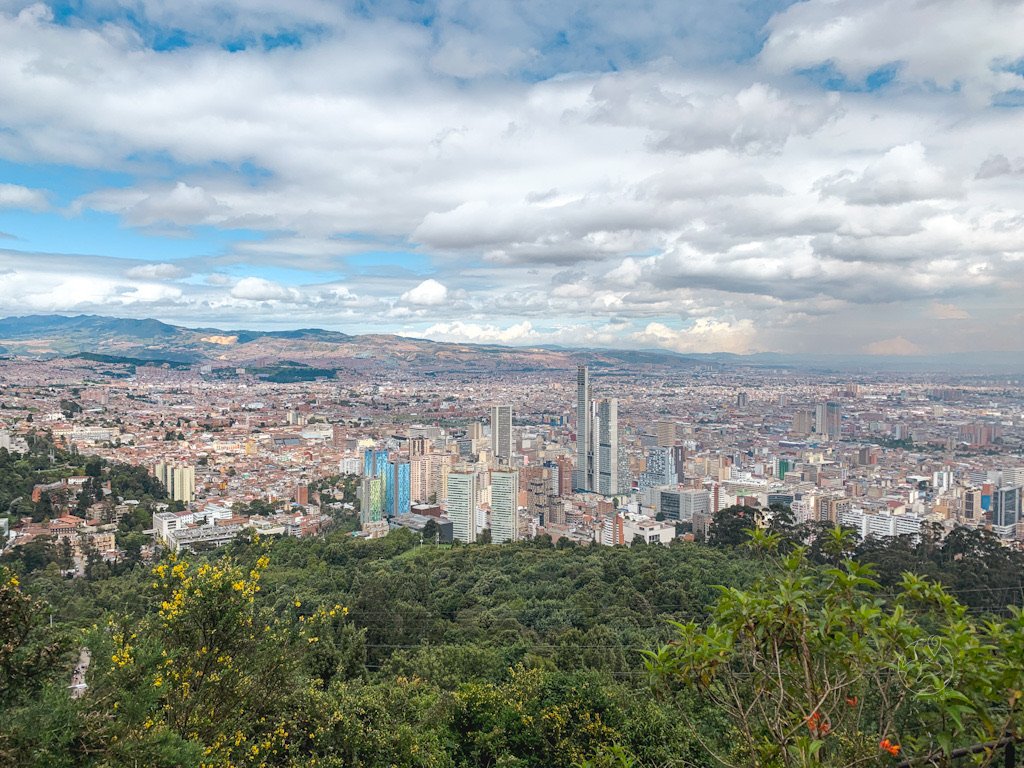Buenos Dias Bogotá
View of Bogotá from Cerro Monserrate
Starting our trip in Bogota was actually a bit of an accident. We knew we wanted to head for Colombia, and we didn’t fancy 2 flight changes to get us straight to the Caribbean Coast. So we made the most of an amazing deal and booked a (relatively) cheap Lufthansa flight via Frankfurt to Colombia’s capital city.
As the trip got nearer, we started to question this decision. A few people raised their eyebrows when we said we were going to Bogota. Granted, none of these people had visited themselves! But we grew nervous. Was it a mistake?
First Impressions
Nestled in the Andes Mountains in the heart of Colombia, Bogotá stands as a bustling metropolis that seamlessly blends its colonial past with modern-day dynamism. As the capital city, Bogotá holds great historical and cultural significance, captivating visitors with its diverse architecture, vibrant street art, and warm hospitality.
Settling in, we soon felt much more at ease in the city. Yes, we had to be careful - as you do in most major cities. But walking around in the day we felt at ease, and everyone we encountered was helpful and welcoming.
La Candelaria
We stayed at Hostel Fatima in the historic neighborhood of La Candelaria - Bogotá's cultural and historical center. We loved walking this neighbourhood, and it was just a taste of the architectural style we would find all over Colombia. Its narrow cobblestone streets are lined with colorful colonial buildings, giving visitors a glimpse into the city's past. Among La Candelaria’s quaint cafés, local markets, and winding streets, you’ll find Plaza Bolívar, the symbolic heart of Bogotá and home to Colombia’s Parliament, Judiciary and the capital city’s local council.
We joined Beyond Colombia's free walking tour to help us get our bearings in the city. It was one of those obligatory tip situations, but ended up being very good value as it helped us discover one of our favourite spots in the city - Plaza Chorro de Quevedo. We returned here a couple of times and enjoyed some beers in the sun. It’s also here that we learnt the hard way the sun is very strong in Bogota! Trust a couple of English people to get sunburnt in the first week of their trip!
As well as the general walking tour, we also did the War and Peace walking tour (no surprise for a couple of history nerds!). It took us through the main actors in the country’s troubled history, as well as to some key sites in the city that were deeply affected by the conflict. It was really interesting for us to hear from a local person and gain a deeper understanding of Colombia's past and present struggles, while witnessing the inspiring transformations taking place within the country today.
Our first taste of Colombian cuisine
If you’ve read any of this blog you’ll know by now that we love food. So, naturally, trying the local food was a priority for us!
Lucky for us, there was a beautiful bistro right on our street, where we enjoyed our first Colombian coffees and arepas - a kind of corn tortilla. They would be the first of many on the trip!
We also discovered the Colombian dish Ajiaco. It had been recommended as a must-try by our tour guide and we were pre-warned that although it is a soup, it is very filling. After a long day of walking, we sat down in a small restaurant and encountered our first culture-shock: there was no menu, instead the waiter listed off the dishes available in Spanish spoken at the speed of light. Not too much of a problem, as we knew what we wanted. So we asked for 2 Ajiacos, said Si to all his questions and hoped for the best. And we were not disappointed!
This delicious dish is a base of thick chicken and potato soup, Our huge bowls were garnished with capers, cream, and a grilled corn on the cob. Alongside this, we got a plate of avocado and a portion of rice, which the waiter motioned for us to chuck into the main bowl and mix together. We dutifully obliged, and tucked in.
Safe to say neither of us could finish our portions, but we gave it a good go! So filling and hearty, I can see myself craving an Ajiaco on a winter's day in England.
We also sampled a local alcoholic drink, of course! Chicha is a traditional Colombian drink that has been enjoyed for centuries. It is typically made from fermented maize (corn) and flavored with various fruits or spices. In the past the corn was chewed up and spat out to start the fermentation process… we were assured this is no longer the case! The Spanish tried to outlaw Chicha and so the drink became a cultural symbol, reflecting Colombia's indigenous heritage and offering a taste of its vibrant culinary traditions. It isn't too alcoholic so we were happy to sip some mid-morning and found it to be mildly sweet and slightly tangy. Nice to sip on, but we weren’t tempted to buy the home-brewed bottles being sold on the street!
Striking Gold
Bogotá is a city renowned for its exceptional museums, each offering a unique perspective on Colombian culture and heritage. The Botero Museum, named after the world-famous artist Fernando Botero, showcases an impressive collection of his distinctive sculptures and paintings, as well as works from his personal art collection, including pieces by Picasso and Monet.
His style is distinctive because of the curvaceous lens through which he views the world. To say he paints ¨fat¨ people is an oversimplification, although he rose to fame when his New York exhibition - including the ¨fat¨Mona Lisa - coincided with the actual Mona Lisa being on display in the city. In reality, it is not only people he draws and sculpts in this style. From cute little horses to a bouquet of flowers, the large, exaggerated style he pioneered is often laden with social and political commentary. He also gifted his collection to the city of Bogota on the condition that it was always free for people to access, which makes him a good egg in our books.
Another must-visit is the Museo del Oro (Gold Museum), which houses over 55,000 pieces of gold and other precious metals, allowing visitors to delve into the rich pre-Hispanic cultures that once thrived in the region. It is billed as one of the best museums in South America, and whilst we did enjoy it we think there will be others more suited to our interests. We visited on a Sunday when entrance is free, and felt that it was a bit too crowded to properly take in the whole collection. But we were still suitably wowed by the parts we saw.
Cerro de Monserrate: A Panoramic Perspective
No visit to Bogotá is complete without ascending Cerro de Monserrate. Rising over 3000 metres above sea level, this iconic hill offers breathtaking panoramic views of the cityscape below. Those with more cash to spend will opt to take the funicular or cable car to the summit, but I wasn’t going to let a lavish expense dent our budget in week one!
Hiking to the top was an adventure in itself. Over 1800 steps wind steadily up the hillside, a literally breath-taking path with altitude factored in! It took about 90 minutes to get to the top, with plenty of chances to stop, rest and admire the views. Once at the summit, we explored the Santuario del Señor Caído de Monserrate, a pilgrimage site revered by locals, and savored the opportunity to take in the awe-inspiring vistas of Bogotá.
A Bright Future?
As with many cities, Bogotá has faced its share of challenges in the past, including periods of violence and political unrest. However, the city has made significant strides in recent years, focusing on promoting peace, inclusivity, and sustainable development.
We found it to be an interesting and welcoming place, if a little rough around the edges. Overall, we are glad we stuck to our guns and started our trip in the city - it felt like the perfect introduction to a year of adventure!
*Affiliate link - if you click this link and book we will earn a small commission. There is no extra cost to you!
Related Content
Pin this blog post to read later…






















